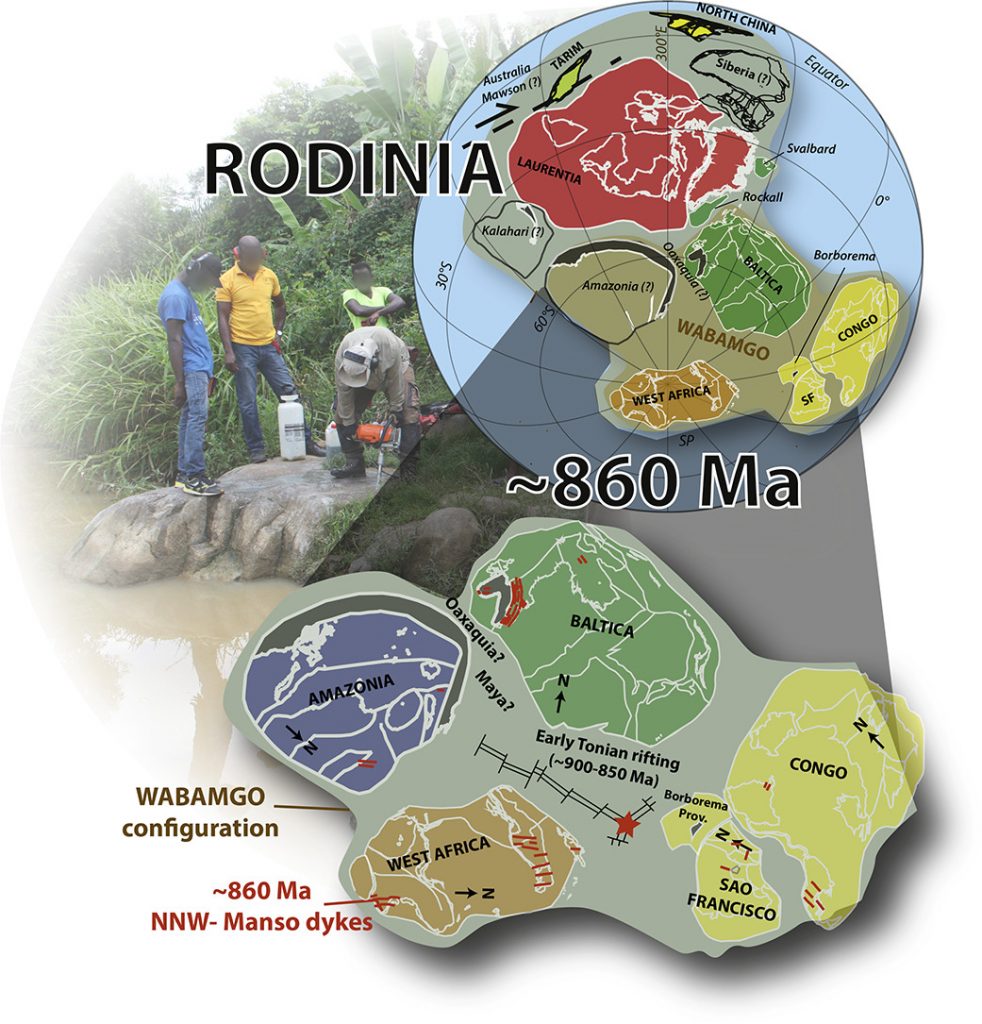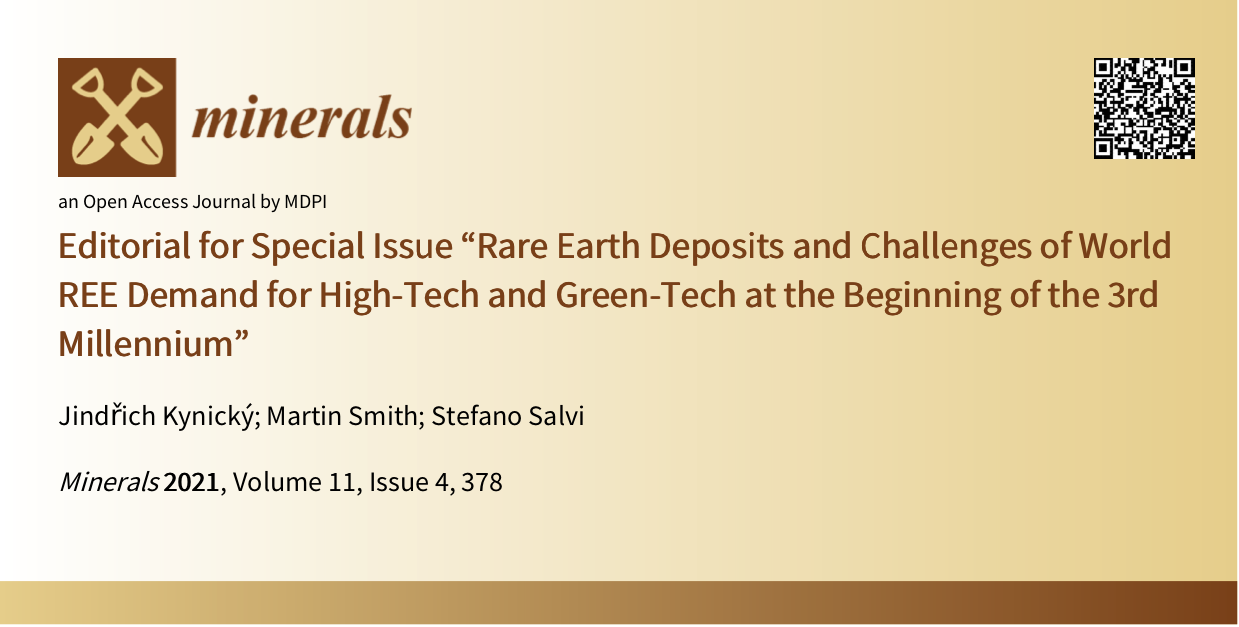Localisation géographique de l’Afrique occidentale il y a 860 millions d’années
The paleogeography of the Meso-Neoproterozoic Rodinia supercontinent remains debated partly because many stable cratons still lack reliable paleomagnetic data for this period. A new geochronological and paleomagnetic study was conducted on the NNW-trending Manso dyke swarm of southern West Africa (Ghana) to clarify the position of this unconstrained continent in Rodinia. Two-Pb apatite ages of 857.2 ± 8.5 Ma and 855 ± 16 Ma agree with one previous baddeleyite age, indicating a ~ 860 Ma emplacement age for the Manso dykes. A characteristic remanent magnetization (ChRM) was isolated in stable single to pseudo-single domain (SD-PSD) magnetite. Well constrained site mean directions obtained for 13 dykes lead to a mean direction for the Manso dyke swarm of Dm = 181.9°, Im = −77.2° (N = 13, α95 = 7.6°, k = 30.6), yielding a paleomagnetic pole at 177.6°E, 28.3°S, (A95 = 12.7 °K = 11.6). Two directional clusters of opposite inclination pass a reversal test (C-class) and the primary origin is supported by a positive baked contact test, satisfying all the seven R-criteria to provide the first West African Tonian key paleomagnetic pole. This key pole indicates a high latitude for the West Africa Craton during the emplacement of the ~860 Manso dykes. A compilation of reliable paleomagnetic poles for West Africa, Baltica, Amazonia and Congo-São Francisco cratons suggests that these cratons were together between ~1200 and 800 Ma in a long-lived WABAMGO configuration. We suggest that the collision of this block with Laurentia along the Grenvillian-Sunsás orogens closed the external Nuna Ocean and formed Rodinia by extroversion.









